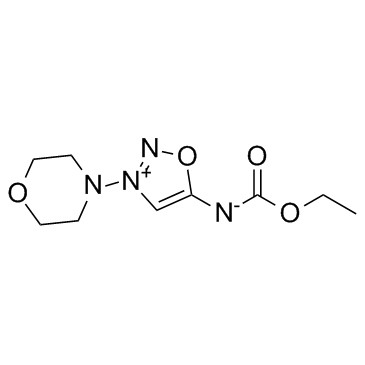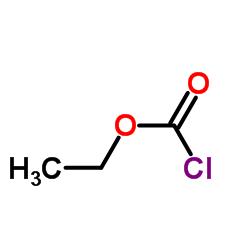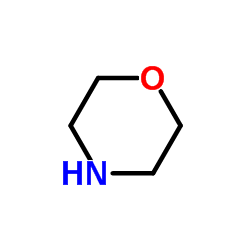Molsidomine

Molsidomine structure
|
Common Name | Molsidomine | ||
|---|---|---|---|---|
| CAS Number | 25717-80-0 | Molecular Weight | 242.232 | |
| Density | N/A | Boiling Point | N/A | |
| Molecular Formula | C9H14N4O4 | Melting Point | 140-141°C | |
| MSDS | Chinese USA | Flash Point | N/A | |
| Symbol |

GHS07 |
Signal Word | Warning | |
Use of MolsidomineMolsidomine is an orally active, long acting vasodilating drug, metabolized in the liver to the active metabolite linsidomine, which is an unstable compound that releases nitric oxide (NO) upon decay as the actual vasodilating compound. |
| Name | Molsidomine |
|---|---|
| Synonym | More Synonyms |
| Description | Molsidomine is an orally active, long acting vasodilating drug, metabolized in the liver to the active metabolite linsidomine, which is an unstable compound that releases nitric oxide (NO) upon decay as the actual vasodilating compound. |
|---|---|
| Related Catalog |
| Melting Point | 140-141°C |
|---|---|
| Molecular Formula | C9H14N4O4 |
| Molecular Weight | 242.232 |
| Exact Mass | 242.101501 |
| PSA | 82.09000 |
| InChIKey | XLFWDASMENKTKL-UHFFFAOYSA-N |
| SMILES | CCOC([O-])=Nc1c[n+](N2CCOCC2)no1 |
| Storage condition | 2-8°C |
CHEMICAL IDENTIFICATION
HEALTH HAZARD DATAACUTE TOXICITY DATA
|
| Symbol |

GHS07 |
|---|---|
| Signal Word | Warning |
| Hazard Statements | H302 |
| Precautionary Statements | P301 + P312 + P330 |
| Personal Protective Equipment | dust mask type N95 (US);Eyeshields;Gloves |
| Hazard Codes | Xn: Harmful; |
| Risk Phrases | R22 |
| Safety Phrases | S36 |
| RIDADR | NONH for all modes of transport |
| WGK Germany | 3 |
| RTECS | WU7677400 |
| HS Code | 2934999090 |
|
~% 
Molsidomine CAS#:25717-80-0 |
| Literature: Chemical and Pharmaceutical Bulletin, , vol. 19, p. 72 - 79 |
| Precursor 2 | |
|---|---|
| DownStream 1 | |
| HS Code | 2934999090 |
|---|---|
| Summary | 2934999090. other heterocyclic compounds. VAT:17.0%. Tax rebate rate:13.0%. . MFN tariff:6.5%. General tariff:20.0% |
|
Taurine reduces nitrosative stress and nitric oxide synthase expression in high glucose-exposed human Schwann cells.
Exp. Neurol. 233(1) , 154-62, (2012) The role of taurine in regulating glucose-induced nitrosative stress has been examined in human Schwann cells, a model for understanding the pathogenesis of diabetic neuropathy. Exposure to high gluco... |
|
|
Comparative kinetics of thiol oxidation in two distinct free-radical generating systems: SIN-1 versus AAPH.
Free Radic. Res. 46(10) , 1190-200, (2012) To study oxidative stress in biological systems, chemical compounds capable of producing free radicals have been widely used. Here, we compared two free-radical generators, 3-morpholinosydnonimine (SI... |
|
|
Conformational altered p53 as an early marker of oxidative stress in Alzheimer's disease.
PLoS ONE 7(1) , e29789, (2012) In order to study oxidative stress in peripheral cells of Alzheimer's disease (AD) patients, immortalized lymphocytes derived from two peculiar cohorts of patients, referring to early onset AD (EOSAD)... |
| Corraton |
| N-(Ethoxycarbonyl)-3-(4-morpholino)sydnone imine,SIN-10 |
| 1,2,3-Oxadiazolium, 5-[[(1E)-ethoxyhydroxymethylene]amino]-3-(4-morpholinyl)-, inner salt |
| (Ethoxycarbonyl)[3-(morpholin-4-yl)-1,2,3-oxadiazol-3-ium-5-yl]azanide |
| (1E)-1-ethoxy-N-(3-morpholin-4-yloxadiazol-3-ium-5-yl)methanimidate |
| Motazomin |
| Molsidomine |
| MFCD00869301 |
| EINECS 247-207-4 |
| Corvasal |
| (E)-Ethoxy{[3-(morpholin-4-yl)-1,2,3-oxadiazol-3-ium-5-yl]imino}methanolate |
| N-(Ethoxycarbonyl)-3-(4-morpholino)sydnone imine SIN-10 |
| (E)-Ethoxy{[3-(4-morpholinyl)-1,2,3-oxadiazol-3-ium-5-yl]imino}methanolate |


 CAS#:110-91-8
CAS#:110-91-8